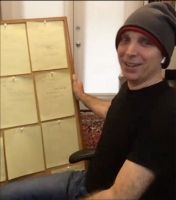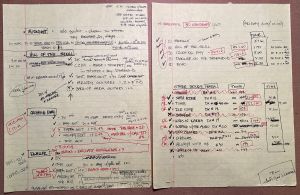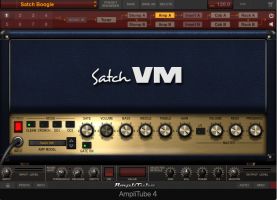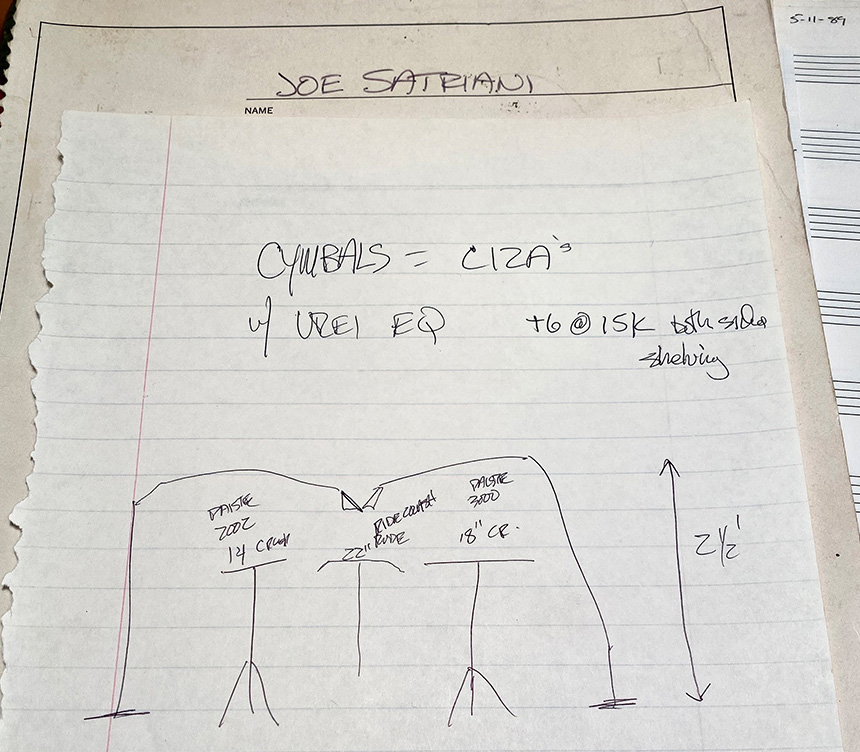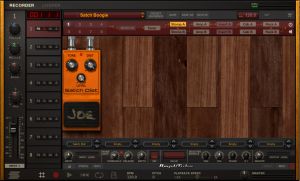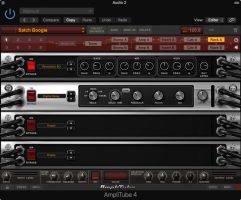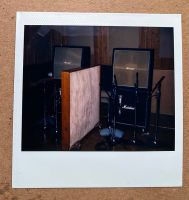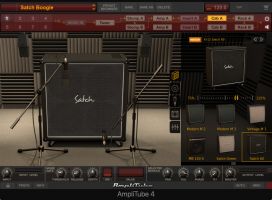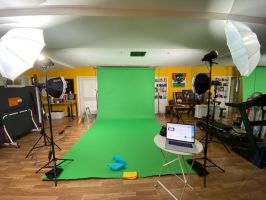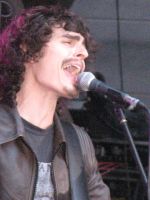www.kvraudio.com/interviews/songs-in-isolation-an-interview-with-joe-satriani-49409
Songs in Isolation: An Interview with Joe Satriani
22nd August 2020
COVID-19 has been hard on all musicians, but particularly musicians like Joe Satriani, who live for the joy and spontaneity of being on a stage. Early in the year he had to postpone his world tour. The financial and emotional toll of a decision like this can't be overstated as he was also releasing Shapeshifting, his 22nd album, and a new Signature Collection for IK Multimedia's AmpliTube. But one shouldn't feel sorry for him because he certainly isn't feeling sorry for himself. Instead he has gotten busy.
When I first talked to Joe about software in the 90s, he had mastered his 4-track PortaStudio for composing his music and didn't completely trust his creativity to a computer. He's now fully embraced the digital world, but at the same time he's never stopped documenting every move he makes. Which brings us to Joe's AmpliTube Collection from IK Multimedia. Anyone who has followed his career will recognize many of the presets from Joe's huge catalog of tunes. And, because of the work that Joe has put in over the years, one can be confident that they're accurate representations.
Talking to Joe is always fun and educational. Even after 22 albums of original and primarily instrumental guitar music, he retains the same creativity, enthusiasm, joyfulness, and precision of craft. Like most of us these days, Joe was at home, and we chatted via Skype.
You have been involved with many, many music projects in your career. How do you stay organized?
It's been different methods for each record. I have my home studio, but I really enjoy recording in a professional studio. I like the environment and the energy it gives me. And, I always prefer drums recorded by great drummers in big rooms by smart engineers with good ears.
Because they are solo records, generally the band is there for like ten days and I'm there for like two months, working eight hours a day—bass guitar, banjo, harmonica, whatever it is—just task after task. So, we've got these boards.
It's more important than ever with my current band. I have a lot of songs, some of them are vocal and some of them are not. None of us are in the same room or town, and my keyboard player, who is also the singer, is in Australia. So, we really had to start thinking about how to organize. We set times and dates and locations of expected performances and delivery. It requires more than having a little notebook or putting everything on a board.
Do you use the cards and boards with everything that you do?
Pretty much. I start with song title, key signature, tempo, and anything weird about the song that sets it apart from the others. I'll make those cards and bring them with me to the studio. It helps me lay things out, helps me sequence the album, which I still like doing. I also keep notes digitally when I'm recording keeper parts at home, but I always go back to the big board.
When we move into the studio, my tech Mike Manning has a book that he writes every single thing down for every track that I perform. And usually they're blown up to include everybody's parts, and eventually when the record is released and I do interviews, I reduce it to a really small book where it has just the essentials like—JS Chrome guitar, JVM head, 4x12 cab, because otherwise I would forget.
Those notes must have been really useful when you were constructing the presets for your new AmpliTube Satriani Collection?
Yes. We have notes that go all the way back to the very first album, and they're funny looking notebooks. Now it's like looking back at a Polaroid from the old days (laughs). I was fascinated in the early days with mic placement because I was not used to being in the studio. I remember there was one morning when we were doing "Satch Boogie" at Hyde Street in San Francisco and John Cuniberti had the idea that at the beginning of the song to use a shotgun mic approach, and then when the up-tempo boogie solo section came, to go close mic. And I just remember thinking OK, let's see what that sounds like. When I heard it, I was like wow, that is genius, because in the beginning there's not a whole lot of people playing, and you get a sense of the location by using the shotgun mic.
You hear a little more of that beautiful Hyde Street Studios room by the way—Studio C upstairs, classic room, recorded just amazing artists through the '60s and '70s. But then, the extra umph you get when that guitar suddenly hits the front of your face with the sound of an SM57 right up to the grill.
I was fascinated that John would have come up with that idea, like he knew what I was looking for. I said to myself, "You have to remember this. You may not use it again, but it's just something to remember that mic placement is part of your storytelling device by doing these instrumentals, and it can enhance a part." So, I drew a little picture...
Quickly drawn mic placement sketch for "Surfing..." album sessions
How did you hook up with IK Multimedia?
This all started quite a while ago through my friend Mark Menghi, who has worked with several different companies. He reached out to me with the idea and I thought, wow, that's crazy. It would be great if I had my own signature sounds in the suite because I definitely would be using them.
What about the gear that was modeled?
That was an interesting process. We had some audio stems and the pedals I used, like the original Rockman 2 driver DS1 overdrive, that I sent them off to IK in Italy. I thought that was really necessary.
My original Marshall head was a '71 Super Lead that had been modified by a local Bay Area guitar player/engineer named Todd Langer. He had added a gain stage to the front of the amp, kind of a master volume thing. That amp did a lot of the heavy Marshall lifting. We would put it together with the Rockman. I'd go into the Rockman and either stereo or mono with no delay and the output would go into a Neve preamp that John had pulled out of a console and put into a discrete case with the shortest cables possible. We got that Rockman to sound like it was a cool amp by recording it like it was an amp.
So, some of the songs, like Ice 9 has a Roland DS1 distortion pedal into the Marshall mic'd up by a (SM) 57. The melody tones went into the Rockman, tube driver. The last solo is with Doug Doppler's little Gorilla amp that I borrowed without asking him one afternoon (laughs). I think that last solo we recorded in Studio D was with a talkback mic. We wanted to use the gear in non-traditional ways to create a special voice for the albums.
Often your solos have harmonics that are sustained and really cut through. Are there any particular compressors in your Collection that you prefer?
AmpliTube in general has the typical compression outboard gear for guitar players and bass players, so we didn't want to focus on that for this particular version, but rather the pedal stuff that I would have used. We have used compression in so many different ways. It such an interesting effect. In the early days I would be recording and John Cuniberti would hook up an 1176 or a limiter, but he would listen to the part first. And he would see what is stopping this guitar part from sitting right in front. Like if there was a bunch of midrange and treble and not too many low notes, but when I hit those notes there was so much low end on the amplifier that it would activate the limiter and kick the sound back. So he would put EQ before the limiter so that the limiter is just reacting to those notes that I really want to bring forward to you and focuses on higher notes that might be annoying to the listener.
And sometimes we would use two compressors together. Or we would use one going to tape Sometimes we would record monitoring the compressor setup so John would get me to perform with as if I was using a pedal. Because you would react to it. You would hit a note, you would hold onto it and you would feel the limiter start to relax, which brings the sound closer to the audience, which makes the note sound like it's sustaining unbelievably.
Of course, we know that in reality the actual note is not sustaining, but the compressor reacts to the transient and brings the level down. And when the transient is gone, you're setting how it opens up and as it releases it sounds like it's coming forward and what the listener hears is the sustain sustaining. Once I started playing with it, I thought. Oh! I can use this. It's just like using a Wah Wah pedal. It became an extension of my performance.
Would you commit those performances to tape...?
Mostly we would perfect the settings of the limiter when we went to mix. We wouldn't commit to tape unless we were using certain delays or reverbs or compressors and we thought we were never going to have that gear again.
Another way to do it, which fascinated me. This was (Producer/ Recording engineer) Andy John's trick. He would take the guitar and go into an 1176 or something like that, and Aux out to a reverb and put it to a 2-track for delay then return it through a compressor on a stereo channel all by itself with a separate fader and mix it in with the direct guitar. Then when it came time to mix he would just ride the fader when he wanted notes to blossom out of the mix. A perfect example is the song Friends from my The Extremist album.
All of these things came back to my head when I was talking to the IK team. They would ask, how did you do that? So, I sent as much as I had. They really went the distance. They picked up the right period pieces, cabinets and heads, and I even had them talking to Santiago Alvarez, the JVM designer to make sure that they had the right version of my signature Marshall amp. I think it worked out great, so I'm very happy with it.
It's an interesting coincidence that Brian May, who wrote the foreword to your memoir Strange Beautiful Music, preceded you with his own Brian May AmpliTube Collection. How has he inspired you as a guitar player?
The first time I heard Brian and Queen I felt he had bridged the gap between Hendrix and progressive rock bands like Yes and ELP. It was so very British but so very soulful at the same time. Brian really has the gift of being able to reach people on an emotional level while wowing them with cool and crazy guitar pyrotechnics at the same time. And the tones...
Amen to that. Shifting gears, do you seek feedback during your creative process, or do you wait until you're done?
I like feedback. I know artists that don't want people to hear their stuff until it's done. Maybe because we fear all rejection that will hamper our ability to finish something. And let me say it's very important for an artist to learn when they need to be alone, so as not to be discouraged. I think that's a real thing. Speaking for myself, almost everything that I've done has been a result of some kind of teamwork. I could talk for hours about every song in my catalog that was made better by somebody in the room. It might be the producer, the engineer, the assistant engineer. It might be because of a mistake. It could be an off comment about something from the band or somebody listening from the other room. You just can't discriminate where some insight is going to come from.
How did that perspective come about for you?
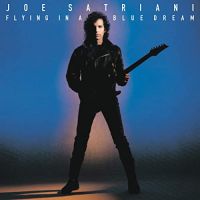 Over the years—it was actually really early on I guess—with Flying in a Blue Dream, I got the idea to add vocals, but I thought the record label might cancel the contract. Or worse, they're going to say, yea, you should sing on every song, and I didn't want to do that either. I was signed to Bill Graham at the time, so I did reach out to the team. I think it was Mick Brigden (Joe's manager) who said the most important thing. He said, "If you've got something to say, then say it. But if you don't, don't feel like you have to sing." And I thought that's really great advice. It had nothing to do with the industry, what the guitar press were going to say, or how I'd get rejected by radio, or whatever. Or even whether anybody thought I could sing or not. That wasn't even an issue. It was just like, if you've got something to say, then say it. That's the artistic way of looking at it.
Over the years—it was actually really early on I guess—with Flying in a Blue Dream, I got the idea to add vocals, but I thought the record label might cancel the contract. Or worse, they're going to say, yea, you should sing on every song, and I didn't want to do that either. I was signed to Bill Graham at the time, so I did reach out to the team. I think it was Mick Brigden (Joe's manager) who said the most important thing. He said, "If you've got something to say, then say it. But if you don't, don't feel like you have to sing." And I thought that's really great advice. It had nothing to do with the industry, what the guitar press were going to say, or how I'd get rejected by radio, or whatever. Or even whether anybody thought I could sing or not. That wasn't even an issue. It was just like, if you've got something to say, then say it. That's the artistic way of looking at it.
It goes to show you, you can't figure things out, so you should just go with what you feel. So I invite engineers and other musicians in to comment on whether they think what I'm doing is cool. Does it work? Do they have a problem with it? And we have great arguments and sometimes it takes days before somebody goes, "Forget about what I said before. Now I get it." Then of course you're thinking "Wait, no, I think I finally got your idea." (laughs).
How did the record label feel about it?
It certainly frightened Relativity at the time. The title track was the one that we should have gone with, but instead we made videos for two vocal tracks thinking that no one wants an instrumental. Which of course is true, because rock guitar instrumentals are traditionally a hard sell. So, I never argued with them, but it was interesting that, if there was one song from that album that became a standard, it was the title track, which was an instrumental.
Has there been any time you didn't have complete creative control over one of your albums?
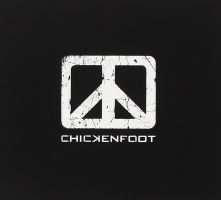 I've always had complete artistic control over my own records. When I've worked for other people, I don't. Like with Chickenfoot, it was a band, so we all had to deal with each other and scratch our heads, and go really, he wants to do that? But that's what a band is.
I've always had complete artistic control over my own records. When I've worked for other people, I don't. Like with Chickenfoot, it was a band, so we all had to deal with each other and scratch our heads, and go really, he wants to do that? But that's what a band is.
Speaking of the people that you work with, Christopher Guest (Nigel Tufnel) makes a guest appearance on Shapeshifting. How did that come about? You were in one of his movies... right?
Yes, I wound up in his movie For Your Consideration. I've known Chris since the early '90s. I was sitting at home at the time when he called me and said: "Would it be a problem for you to fly to LA for a couple of days?" And, I was like, "Problem? What?" I wound up doing a track that Steve Lukather was producing called Break Like the Wind. I played a gig or two with the guys (Spinal Tap band) as a guest and over time I got close to Chris. He's a brilliant musician and a really, really funny and kind person. He plays mandolin an hour or two every day. That's his discipline.
Mandolin is a really hard instrument to play...
I don't really know how anybody plays the mandolin to tell you the truth. I look at the tuning and it's just like, forget it. And the tiny spaces between the frets and the whole thing. I faked it on several albums by having guitar-tuned mandolins or having twelve-strings with capos and just kind of play along with it.
I had thought about doing something musical with him for a long time. I was recording at Jim Scott's PLYRZ Studios, which was about an hour away from where Chris was, so I sent him an email and said, "This is a song called Yesterday's Yesterday. It's an offbeat, crazy thing to put on one of my records, but if you wanted to record it, you can come up here or record at home or whatever." He immediately sent us two performances that were so fun that we just said, "Wow, can we use both of them, and feature different ones at different times?" He was very gracious about that. So, that's how Chris wound up on that song.
Cool, and there's a video too?
Yea, it's a family made video. I was in the other room against a green screen, looking like an idiot like I usually do. My wife was filming me. We sent all of the files to my son, ZZ in LA and he just went crazy. I think he made two thousand drawings based on the films that we sent him and he created this combination animated video. It's just a beautiful representation of the goofiness and the happiness in the song.
When I got Shapeshifting on iTunes, I somehow managed to flip the song order and heard Yesterday's Yesterday first. I'm thinking...whaat? Where is Joe going with this?
So, we're working on that song, right? And it starts with just the acoustic guitar, and it's got that catchy melody, so eventually we're out there at the studio and we're whistling the tune, right? At one point, we all look at each other and go, "You know, when was the last whistling hit song?" Everyone takes out their phones and starts Googling it. Like, "in the last few years there have been 25 #1 hits with whistling." The idea seems far-fetched, so we move on.
Fast forward a little, Eric Caudieux, my editor, is upstairs and with his own station in the studio. He's collating all of the tracks because we're moving fast with the band. As a joke, he finds some whistling somewhere, and sticks it into one of the tracks of the tune. So, we're listening to a banjo track or something, and the last bit comes and all of the sudden we hear this whistling. And, of course, he's cracking up, and I said, "Look guys, we have to do this."
But how do you record whistling? Do you call a guy in LA that does all the whistling sessions? Do we whistle? Does anybody whistle? I'm not really a good whistler. Jim kept putting it off. I think he had a plan, but I didn't know it, so we just kind of laughed about it. Eventually one day, Jim said, "Okay, we're going to whistle now." We record about ten takes of us whistling. Eric takes all of that and separates the whistle tracks and adds a bit of reverb, just to show us that this is "as good as it's going to get guys." As soon as I hear it, I'm like that's it. The song has to start with these whistles fading in like it's a memory that you're having of being a kid or your vacation that you just came back from when in your carefree moments of a few days ago.
It sounds a bit funky, because we're not great whistlers, so we're searching for noise that we can add, like footsteps, urban noises, animal noises. I happened to remember something that I had recorded on my cellphone in Molfetta, Italy on a tour we did. It was the middle of summer like a hundred degrees at siesta time, so there was nobody around, no cars, like a hundred degrees, so the only sound was a billion insects going crazy. So, we used that recording and we blended it in with the whistles to cover up our whistling talent, and that became the thing.
Even then, I didn't make the final decision until (Producer John Cuniberti) was mastering the record. But, it was just a heartfelt thing. Every time I heard the whistles, and I heard those insects, I thought this is the right emotional move. Even though it may not belong on a Joe Satriani guitar instrumental record, the song itself will have its own identity because of this. And how it affected my son ZZ and what he heard for the video, we did. It just goes to show you how important being open to ideas is during the recording process. It's so important.
What impact has the pandemic had on you? You had to cancel your EU tour.
Yea, in my head I just thought I've got this live band and we were just days away from rehearsing for the tour. I really wanted to stay engaged with the band even though I had a feeling it is going to be 12-18 months until we start the tour. I thought well, why don't we just make records while we're all at home. Everyone's got a laptop or Pro Tools or something that we can make music on.
I thought I should lead by example so I called everybody up and said, "Look, we're going to do at least two records. One is going to be vocal and one is going to be instrumental, and here's some music." So, I just started sending music. And I did notice, there's a song that has to do with isolation, and even on the simplest level, and feeling the weight of the situation around the world when you watch the news, you realize, wow, this is a shared experience. It's millions and millions, if not billions of people around the world who are feeling just like me, who are confused. They've had the social rug pulled out from underneath them and then everyday they go, "Wow, how am I supposed to live like this?" The new reality is we all have to work in a different way.
We hear that one of those albums will be influenced by the band, Weather Report. When most of your fans think of your music over the years it's been Joe Satriani and guests. Weather Report was group improvisation in its highest form, but with structure...
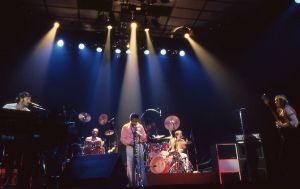
Weather Report 1980
- credit Chris Hakkens
Great structure. Those records with Jaco Pastorius like Heavy Weather, unbelievable records for a combination of free form and structure, and the lightness of it. I love Joe Zawinul and the way he played. He was not afraid of simple repetition to elicit emotion. Obviously, he could play jazz like crazy, but I think he's one of those musicians that understood very early on that no chord is better than any other chord. No scale is more important than any other scale. They were all just tools to elicit emotions, to match the emotions of the composer, to draw emotions from the audience.
I picked up on that with Weather Report when I was a young music student. When I heard them I heard beautiful songs that were in major keys where everyone else is trying to find the weirdest key signature they can and put on as many wrong scales as possible and make them right. Zawinul could just sit there and play a major scale and your heart would melt. And Jaco was the same way, I mean Teen Town was so much fun, but just go try and play it and you realize, oh my god, this is serious virtuosity. How can it sound like so much fun? That band, those recordings, and those compositions were very inspirational for me.
There are a couple of songs I had worked in, I had called Seventies Things One and Seventies Things Two, and I realized that what I was bringing back, was some of that memory. And I wanted room for Rai Thistlethwayte, who is just a mind-blowing keyboard player that can play both the craziest jazz and as well as bone crushing rock. He plays guitar and he sings like crazy. I thought, this isn't going to be Joe playing all of the solos. I have to make equal space for Ray to show his brilliance.
The songs started to have that feel of those early Weather Report records where everyone was contributing. I hadn't really thought about it until I was sending these nightly MP3s out to the band, mainly because Rai is in a different time zone, so 9:30pm at night seemed like the one time that everyone could text each other, so I started texting these MP3s, and it was Kenny Aronoff who actually said, "This is like Joe Weather Report." But it really woke me up to that, that's what I was leaning on.
Many of us will look forward to that.
For those interested in learning more about Joe Satriani check out our interview from 2012
or...
KVR Audio, Inc.
www.kvraudio.com
